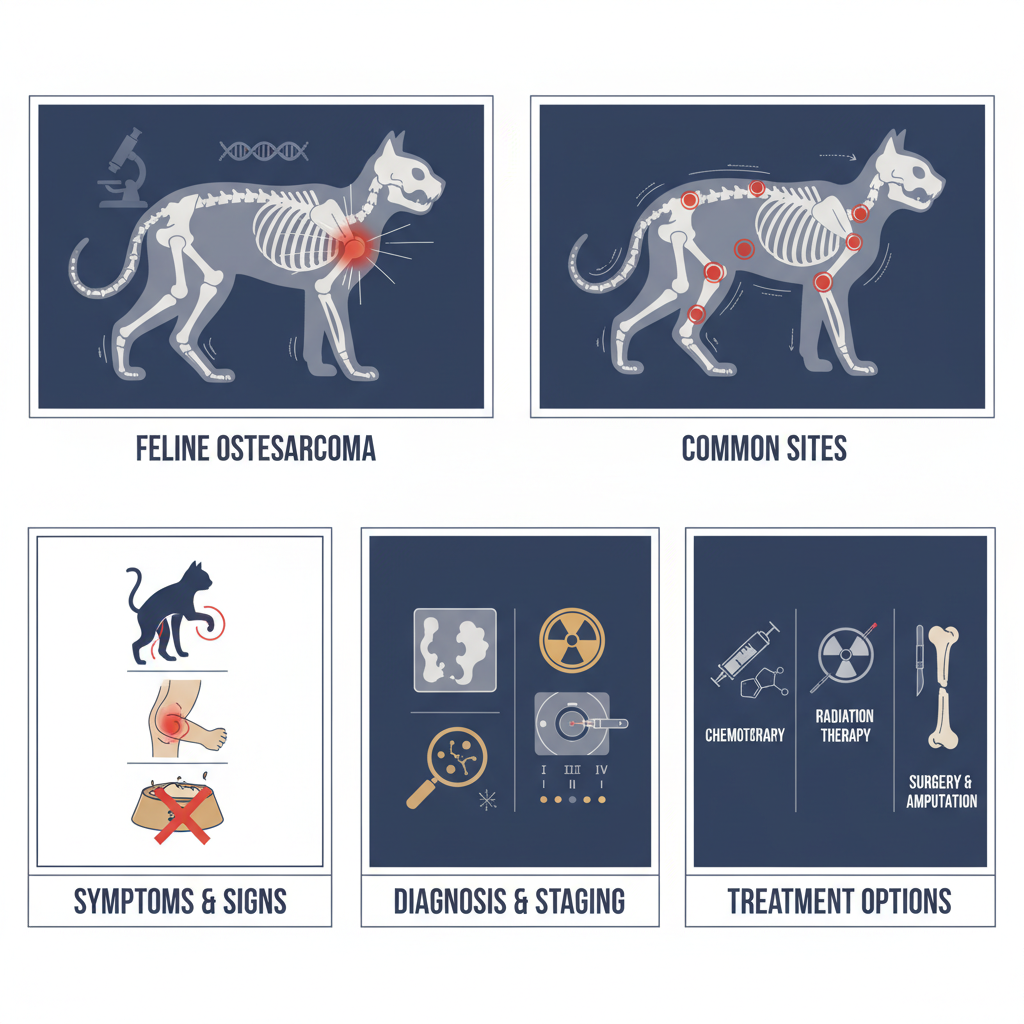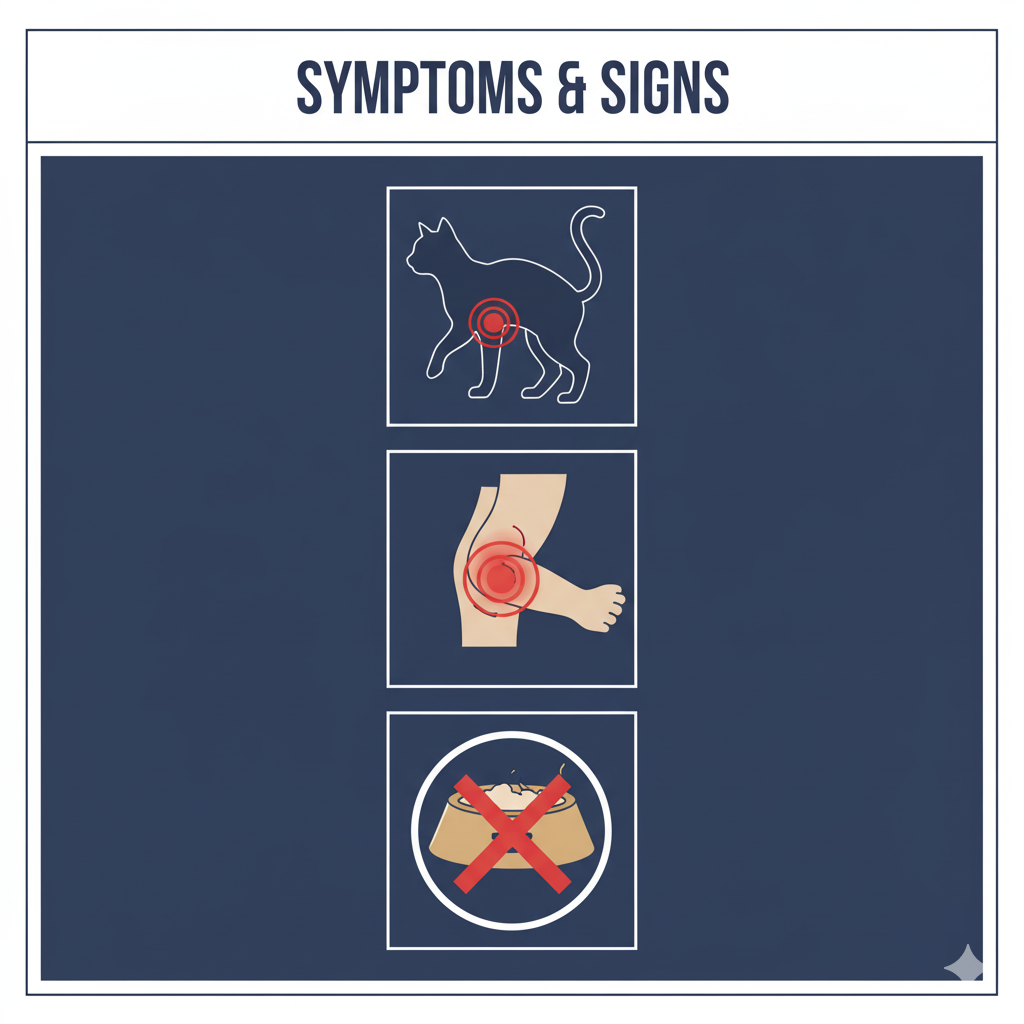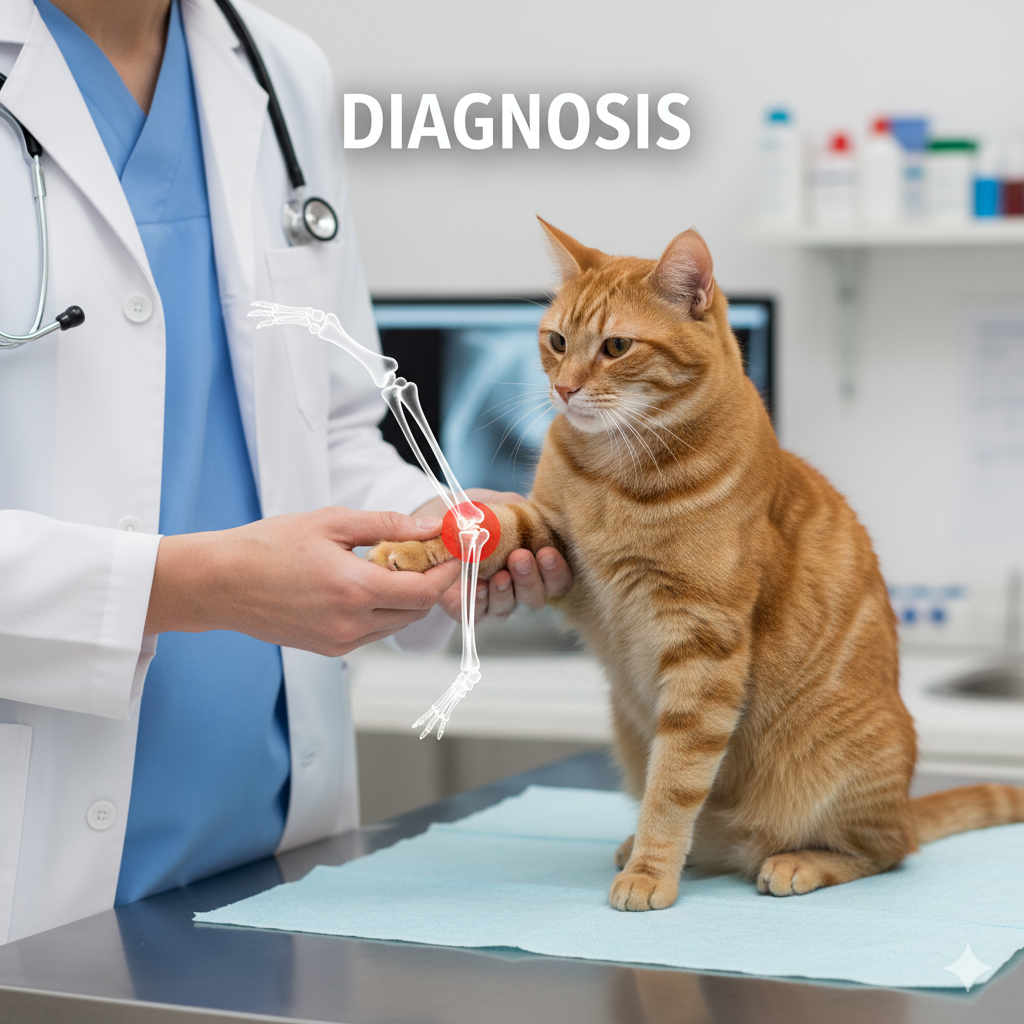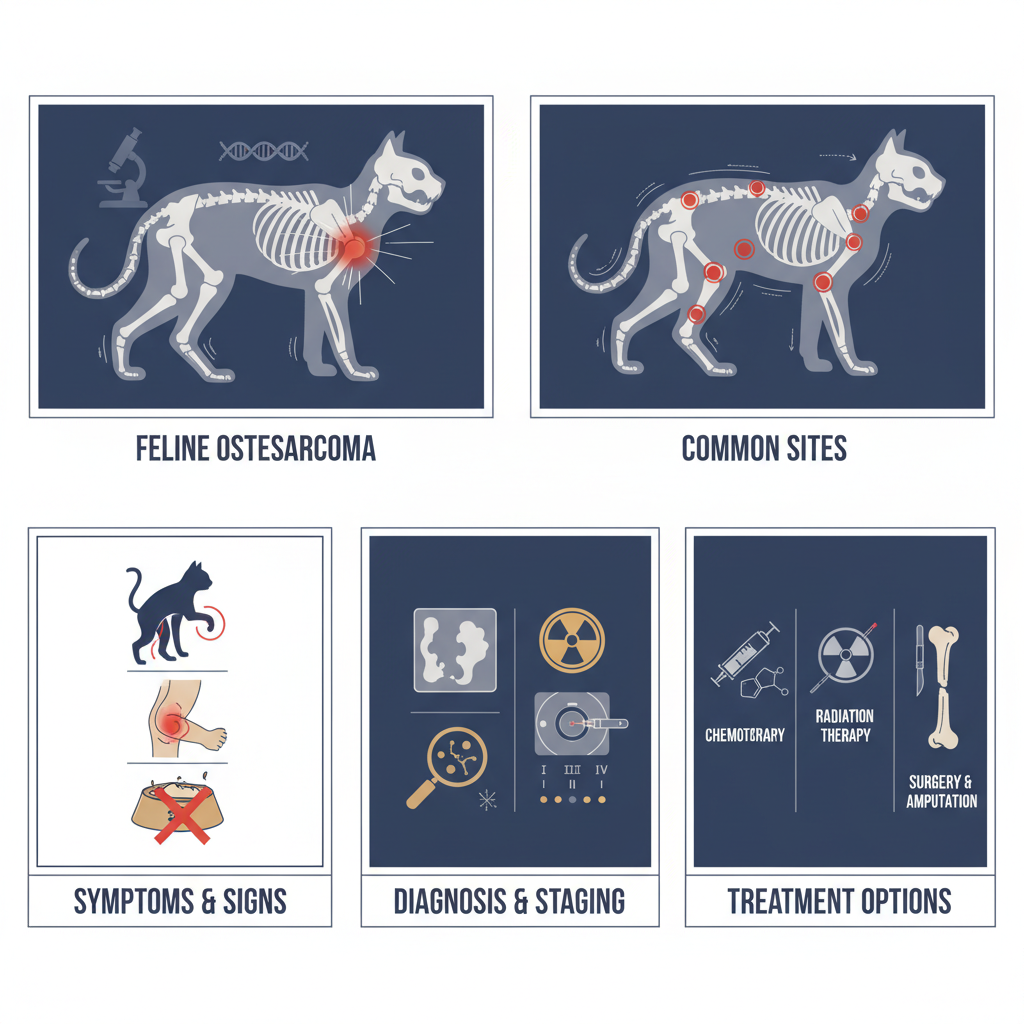Introduction of Osteosarcoma
When your cat starts showing subtle signs of discomfort or limping, it can feel alarming. One of the possible — though rare — causes is Osteosarcoma (OSA), a type of bone cancer. While this diagnosis sounds scary, cats often fare better than dogs when treated appropriately. This article will guide you through what osteosarcoma in cats involves, how to spot the red flags, treatment options, and how to help your feline companion maintain quality of life. We will also include external links to trusted veterinary sources to support further reading.
What is Osteosarcoma in Cats?
Osteosarcoma is a malignant bone tumour that arises from the cells responsible for forming and breaking down bone (osteoblasts and osteoclasts). In cats, although bone tumours are quite rare, when they do occur OSA is the most common type. Vin+2American College of Veterinary Surgeons+2
For example, one source explains:
“Osteosarcoma (OSA) is an aggressive or malignant bone cancer that affects any part of the skeleton.” PetMD
So in essence: the bone cells go rogue, create abnormal bone or bone-like tissue, and destroy normal bone.

How Common Is It — And Why It Happens
- Bone tumours in cats are uncommon. According to one article: “Bone cancer in cats is not as aggressive … metastasizes only 5-10% of the time.” PetMD
- It constitutes about 65-80% of primary bone tumours in cats. American College of Veterinary Surgeons+1
- The exact cause is not well understood. Genetic predisposition, environmental influences and prior bone disease may play roles. Vca+1
Because it’s rare, many cats are only diagnosed after significant symptoms appear, making awareness of early signs important.
Common Signs & Symptoms
If your cat is developing bone cancer, symptoms will depend a lot on where the tumour is located (limb vs skull vs spine). Here are key signs to look out for:
Limb (Appendicular) OSA
- Limping or reluctance to use a limb
- Swelling or a firm bump on a leg
- Warmth in the affected area due to inflammation
- Possibly a pathologic fracture (bone breaks more easily) Vca+1
Skull/Head, Spine, Ribs (Axial) OSA
- Swelling or asymmetry of the face or jaw
- Difficulty eating, drooling, mouth pain (if jaw bone is involved) Vca+1
- Changes in breathing, nasal discharge (if ribs/face)
- Reluctance to jump or climb, weak gait (if spine involved)
Because pain is a major component of OSA, you may also notice: reduced appetite, lethargy, hiding or irritability. PetMD+1

Diagnosing Osteosarcoma in Cats
When you bring your cat to the vet, here’s what usually happens:
- Physical Exam – The vet will palpate the suspected tumour area, check for swelling or pain. Vca
- Radiographs (X-rays) – Bone tumours often show up as “moth-eaten” or lytic (bone destruction) lesions on X-rays. Vca+1
- Advanced Imaging / Staging – Chest X-rays, abdominal ultrasound or CT may be used to look for spread (metastasis). PetMD+1
- Biopsy or Fine-Needle Aspiration (FNA) – To confirm that the lesion is malignant osteosarcoma and not a benign bone lesion or infection. Vca+1
Accurate diagnosis and staging are essential because treatment and prognosis depend heavily on how far the disease has progressed.
Treatment Options
While OSA is serious, in cats the disease behaves somewhat more favourably (in many cases) than in dogs. PetMD+1
Here are the main treatment strategies:
Surgery
- Amputation of a limb is often the primary treatment for appendicular OSA (leg bones). Cats adapt very well to three‐leg mobility. Vca+1
- For axial cases: removal of part of the jaw (mandibulectomy/maxillectomy) or other targeted surgery. PetMD

Radiation & Chemotherapy
- Radiation may be used for pain relief or when surgery isn’t feasible. PetMD+1
- Chemotherapy’s role in cats is less well defined than in dogs; used in some cases especially if spread is present or surgery alone isn’t enough. PetMD
Pain Management & Supportive Care
Because bone cancer causes significant pain, managing that pain is a priority: NSAIDs, opioids, gabapentin, bisphosphonates and other pain meds may be used. Joii Pet Care+1
Prognosis (What to Expect)
Key points:
- Cats with appendicular OSA (limb) generally have better prognosis than axial (skull/spine) cases. PubMed+1
- One study found for limb OSA treated with surgery: 1-year survival ~66%, 2-year ~55%. PubMed
- For axial tumours: median survival may be 5–6 months without aggressive treatment. PubMed
- Early detection, absence of metastasis at diagnosis, and successful surgery improve outcomes significantly. PubMed+1
It’s important to discuss individual prognosis with your vet, as each case is unique.
What Can Cat Owners Do?
Monitor for Early Signs
Pay attention to subtle changes: limping, swelling, chewing at a limb, reluctance to jump, difficulty eating (jaw), etc. Early vet visits help.
Maintain Regular Vet Checks
Older cats and those with prior bone injuries or orthopedic issues may warrant closer attention.
Ask About Pain Relief
Even if aggressive treatment is chosen, managing the cat’s comfort is vital.
Make Humane Decisions
If your cat’s quality of life declines significantly, discuss options like palliative care or humane end-of-life decisions with your vet.
Explore Trusted Sources
For further reading, check out:
- VCA Animal Hospitals’ detailed article on osteosarcoma in cats. Vca
- PetMD overview of feline osteosarcoma. PetMD
Conclusion
While a diagnosis of osteosarcoma in cats can be frightening, remember: cats often have less aggressive forms of OSA compared to dogs, and many adapt well after treatments like limb amputation. Early detection, accurate staging, and appropriate treatment make a big difference. Always work closely with your veterinarian or a veterinary oncologist to choose the best path for your feline companion.
what causes osteosarcoma in dogs
Osteosarcoma in dogs is caused by genetic mutations and factors that increase bone cell activity, such as rapid bone growth, old bone injuries, or radiation exposure. It’s most common in large and giant breeds like Rottweilers, Great Danes, and Greyhounds. Mutations in tumor-suppressor genes like p53 and Rb allow uncontrolled bone cell growth, leading to cancer.
what are the first signs of osteosarcoma in dogs
The first signs of osteosarcoma in dogs are usually mild and gradual, often mistaken for simple joint pain or arthritis. Common early symptoms include:
Lameness or limping that doesn’t improve with rest or pain medicine
Swelling or a firm lump on a leg, jaw, or rib
Pain or sensitivity when the area is touched
Reluctance to move, run, or climb stairs
In some cases, a sudden fracture may occur with minimal trauma (called a pathologic fracture).
